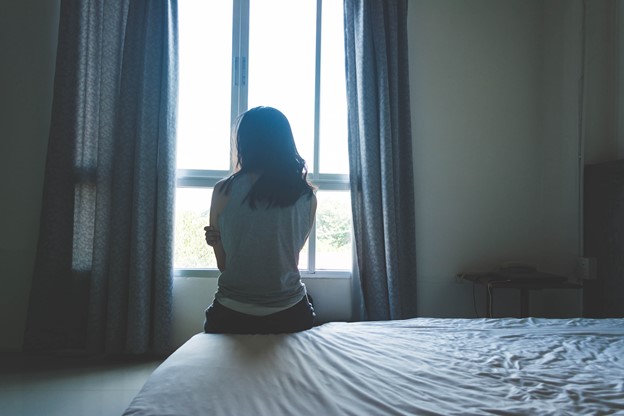Modern Day Sex Trafficking
by Leah Rush Easterby, Contributing Editor and Greg G. Gutzler & Diandra “Fu” Debrosse Zimmermann, Contributing Authors
Civil Liability for Human Trafficking
An estimated 21 million survivors of human trafficking live in the United States. Human trafficking is one of the fastest-growing criminal enterprises, and civil cases against traffickers are increasing as well. Human trafficking disproportionately affects people of color and the LGBTQ community, which raises additional important civil rights and social justice issues.
With a shifting social landscape, and realizing that justice may be available, sex trafficking survivors are speaking up more about their abuse and filing lawsuits to vindicate their truth against the hospitality industry, under the federal Trafficking Victims Protection Reauthorization Act (TVPRA) for knowingly benefiting from trafficking on their premises.
Sex trafficking under the TVPRA is the recruiting, enticing, harboring, transporting, providing, obtaining, advertising, maintaining, patronizing or soliciting a person for the purpose of a commercial sex act. The statute broadly defines “commercial sex act” – “any sex act, on account of which anything of value is given to or received by any person.” 18 U.S.C. § 1591. When prostitution is induced by force, fraud, coercion, or the victim is under 18 years old, the trafficker, and the establishments that enabled the exploitation, violate the TVPRA. Any time a child is sold for sex, trafficking occurs. TVPRA damages include attorneys’ fees and punitive damages.
According to the Department of Health and Human Services, force, fraud, and coercion have the following meanings:
Force includes physical restraint, physical harm, sexual assault, and beatings. Monitoring and confinement are used to control victims. One study revealed at least 95% of prostituted women had sustained traumatic head injuries.
Fraud includes false promises of employment, love, or a better life. Over time, working conditions, compensation or debt agreements, or the nature of the relationship changes.
Coercion includes threats of serious harm, including reputational or physical harm, or restraint against any person, psychological manipulation, document confiscation, and shame and fear-inducing threats to share information or pictures with others or report to authorities.
Also note that case law applying the TVPRA broadly defines and interprets the statutory terms. As cases recognize, the TVPRA should be broadly construed because it serves a remedial purpose and uses broad language like “whoever” and “any.” Further, the violation need not be part of some larger, ongoing trafficking scheme. A single act satisfies the statute because the TVPRA “unambiguously covers a broad range of conduct with no requirement that a defendant intend to further any underlying sex trafficking scheme.”
In December 2020, the U.S. Department of Justice charged Canadian fashion executive Peter Nygard with sex trafficking and racketeering. He’s accused of “a decades-long pattern of criminal conduct involving at least dozens of victims in the United States, the Bahamas, and Canada.” The 79-year-old executive allegedly used the Nygard Group’s influence and money to recruit women and girls (whom he called “girlfriends”), then used force, fraud, and coercion to make them have sex with him and his friends.
Nygard often recruited socioeconomically disadvantaged females and those with a history of abuse. False promises of modeling fame and fortune kept his victims under control, along with constant surveillance and physical isolation. Nygard gave victims illegal drugs and alcohol to ensure their compliance with his sexual demands, and when that didn’t work, he forcibly assaulted them.
Nygard also engaged in trades with his friends and business associates whereby they would bring him women or girls to have sex with in exchange for sex with one of Nygard’s “girlfriends.” Nygard used a vast infrastructure to manipulate, intimidate and control his victims and accomplices.
“These 57 survivors are placing all traffickers on notice that their time is up and they will be held accountable. I am honored to join my partner Greg Gutzler, who is leading the fight against Nygard, and my partners Amy Keller, Adam Levitt, Mark DiCello and Justin Hawal, in seeking accountability, justice and change for these extraordinary women and young ladies.”
If Nygard’s modus operandus sounds familiar, that’s because it is. In some respects, certain societal movements have tried to normalize what is, in essence, sex trafficking. For example, Holly Madison, Hugh Hefner’s “girlfriend no. 1,” wrote in her autobiography that the massive gates securing the Playboy Mansion made her feel like a captive.
Hefner’s “girlfriends” were given a curfew and weren’t allowed to have visitors. They were expected to be constantly available for a price, and condoms were strictly prohibited. If a “bunny” wasn’t available for a club night, she didn’t get her “allowance”—an average $200 per week in the early days. The bunnies weren’t allowed to date customers outside the club, which Hefner made perfectly clear in their training manual—he had the bunnies followed by private investigators to ensure compliance.
Model Chloe Goins accused Bill Cosby of drugging and raping her at the Playboy Mansion, one of many of Cosby’s alleged sex offenses at the Mansion. Goins called Hefner a conspirator to Cosby’s sex crimes.
During his lifetime, Hefner managed to perpetuate cultural norms of male promiscuity and objectification of women at a legendary status. In 1970, Hefner described feminists as “unalterably opposed to the romantic boy-girl society that Playboy promotes.” What some call romantic is to others considered abuse in the extreme.
Trafficking Victim Profile
Traffickers typically exploit the vulnerabilities of marginalized groups to keep trafficking rings alive, but anyone can be a victim of trafficking. Typical victims are immigrants, the homeless, runaways and foster children, and others desperate for a better life who can be lured in with false promises of love, fame, or fortune. People of color and the LGBTQ community are disproportionately affected. As many scholars have described, sex trafficking has its roots in slavery and is an outgrowth of that mentality. Traffickers then use force, threats, addiction, homelessness, and shame as leverage to hold victims captive.
Some subsets of the population are particularly vulnerable to sexual exploitation and trafficking. They primarily include people in desperate need of love and money.
- Past sex abuse victims. 95% of sex trafficking victims have a history of childhood sexual abuse.
- By a large margin, most trafficking victims are women and girls. Transgender populations are also especially vulnerable.
- 75% of women in prostitution have been homeless at some point in their lives.
The death rate of prostituted women is 240 times higher than any other profession. For those that survive the physical trauma, sex trafficking victims experience PTSD at rates equivalent to combat veterans. And several studies show that women in prostitution have higher addiction rates than the general population.
Keeping Sex Workers in the Trade
Claims that prostitution is a victimless crime are wrong. While some claimants are seeking justice from businesses that profit from commercial sex, we also need to take a closer look at why sex trafficking is so prevalent in the first place. A significant percentage of “sex workers” are under immense coercion to engage in the “trade” and have no realistic option outside the scheme once they are lured in.
A common threat pimps use to control sex workers is not just violence, but also the threat to have them arrested for prostitution—coercion that is perpetuated by prosecuting prostitutes, but not the people exploiting the demand for commercial sex. In effect, we keep victims enslaved and enable the trafficking to proliferate.
More sophisticated sex traffickers threaten victims with civil lawsuits. When Suzanne Moore called Hugh Hefner a pimp, he threatened to sue for defamation. “But that’s what he was,” she insisted. Regarding her truth defense, she joked, “What a hoot it would have been to argue whether a man who procured, solicited, and made profits from women selling sex could be called a pimp.”
Basis of Hotel Liability
The TVPRA provides for civil liability against any party who “knowingly benefits, financially or by receiving anything of value” from assisting, supporting, or facilitating human trafficking when the party knew or should have known that a commercial sex act would ensue. The hospitality industry is accused of profiting from slave labor and for recklessly turning a blind eye to sex trafficking on their premises. Hotels have sufficient knowledge that sex trafficking is occurring on their premises, but ignore the tell-tale signs, or or are paid for complicity, while profiting from rooms rented to traffickers for forced sex work.
Victims have filed claims against several hotels under the TVPRA. The list of named defendants includes: Best Western, Choice Hotels, Comfort Inn, Econo Lodge, Extended Stay America, Hilton, Hyatt, Marriott, Inter-Continental, and Wyndham (plus several subsidiaries). Since the lawsuits’ inception, hospitality companies have instituted trafficking awareness programs to alert employees to the signs of human trafficking and how to report it. The success of these programs is unknown, but the heightened awareness for the general public is a step in the right direction.
The Human Trafficking Institute reported that from 2018-19, civil trafficking lawsuits more than doubled. In 2019, more than 125 defendants in the hospitality industry were sued. Lisa Ricchio, the first federal TVPRA plaintiff, claimed in her 2015 lawsuit she was held captive and trafficked in a Massachusetts hotel. She settled in December 2019.
In December 2020, three Florida hotels and motels settled lawsuits filed by a woman who claimed she was trafficked in the hotels for 6 years beginning when she was a minor. She alleged the hotels disregarded clear signs of trafficking on their premises. Trafficking signals included traffickers paying for rooms in cash one night at a time, heavy foot traffic in and out of rooms, frequent linen requests, excessive condoms in the room, and refusal of housekeeping. The judge in the case did not require a showing of actual knowledge on the hotels’ part, so long as a tacit agreement with the traffickers could be reasonably inferred.
Revival Windows Provide Opportunities
Under the TVPRA, the statute of limitations is ten years from the date of last violation, and there are a variety of theories to equitably toll the statute of limitations. Some states have opened “revival windows” for time barred sex abuse claims. There are three categories of statutes of limitations for sex abuse claims: open, closed, and “grey.” Each statute is state-dependent.
Open states have a statutory revival window with retroactive application that is currently open. Closed states either never opened a revival window or it has since expired. Grey states have varying statutory provisions where retroactive application might allow filing on a case-by-case basis. For example, the current age of the claimant might determine whether the claim is time barred or open for filing. Vermont, Maine, and Guam have opened their revival windows in perpetuity. New York’s window will be the next to close—August 14, 2021.
Most states, including Texas and Florida, are considered grey. In grey states, the discovery rule often comes into play, and the limitations period is determined by the date the victim discovered or reasonably should have discovered her injury was caused by sex abuse. In some states, discovery can be premised on a repressed memory theory (dissociative amnesia).
Special Considerations in Representing Trafficking Victims
Sex trafficking cases are uniquely difficult for lawyers to pursue. Identifying and locating victims and defendants can be challenging. Even after establishing a relationship with a sex trafficking plaintiff, maintaining contact can be downright impossible.
Trafficking victims have urgent needs that law firms must be able to address in addition to run of the mill litigation services. Many of these plaintiffs will be homeless, addicted, and suffer long term consequences of abuse, such as PTSD and Stockholm Syndrome.
If you’re considering taking on sex trafficking cases, make sure you and your staff are trauma informed and can adeptly take an empathetic approach to your relationships with trafficking victims. Diandra “Fu” Debrosse Zimmermann noted, “Taking dozens of clients under your wing is a special responsibility, both legally and personally. They rely on your legal expertise, but more importantly, your understanding of trauma and how to best provide them a voice while recognizing their unique journeys to get to this point.”






Comments